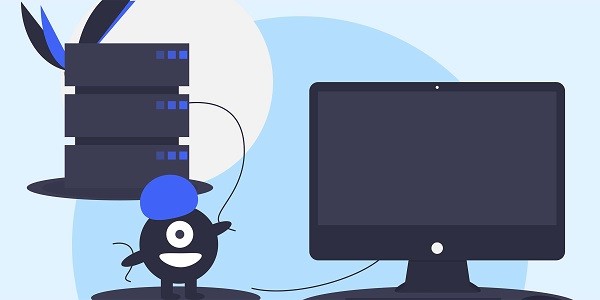This article analyzes the proxy management mechanism of SwitchySharp and its collaborative application with IP2world proxy IP service. Combining dynamic residential proxy, S5 proxy and other resources, this article discusses how to achieve efficient anonymous access and regional unlocking at the browser layer through refined traffic control and high-quality IP resources. What is SwitchySharp?SwitchySharp is a proxy management extension for Chromium browsers (Chrome/Edge/Brave, etc.), which supports multi-proxy configuration and automatic rule switching for HTTP/SOCKS protocols. Its core function is to automatically select proxy channels through preset rules (such as domain name matching, regular expressions), and realize intelligent diversion of "direct connection" and "proxy" traffic. Since the original SwitchySharp has stopped maintenance, the current mainstream alternative is SwitchyOmega (functional compatibility and continuous updates).IP2world's proxy services (such as dynamic residential proxy and S5 proxy) can provide SwitchySharp with massive IP resources. For example, users can configure independent proxy groups for different scenarios: unblock Netflix through IP2world's US residential IP, access localized e-commerce platforms through German data center proxy, while keeping other traffic direct to reduce latency. Technical features and core advantages of SwitchySharp1. Refined flow controlRule matching engine: supports regular expression matching based on domain names, URLs, and IP addresses (such as *://*.google.com/*), allowing the proxy to be enabled separately for specific services (such as Gmail, YouTube);Multiple scenario mode presets: Users can create different configuration groups such as "work mode" (only the corporate network uses a proxy), "privacy mode" (global proxy), etc., and switch with one click;Traffic statistics and logs: Real-time monitoring of traffic consumption and response speed of each proxy channel, assisting in optimizing rule priorities.2. Low latency and high compatibilityProtocol support: natively compatible with HTTP/HTTPS/SOCKS4/SOCKS5 protocols, IP2world's S5 proxy can be directly integrated via socks5://[IP:port] format;Intelligent fallback mechanism: When the main proxy node fails, it automatically switches to the backup node (such as other IPs in the IP2world dynamic residential proxy pool) to avoid network interruption.3. Sync and collaborate across devicesConfiguration export/import: quickly migrate proxy rules to other devices through JSON files, suitable for unified deployment by the team;Link with IP2world API: Use scripts to periodically obtain the latest available proxy IP list from IP2world API and automatically update SwitchySharp's proxy configuration. IP2world proxy service enhances SwitchySharp1. Regional unlocking capability expansionPrecise geo-targeting: IP2world provides dynamic residential IPs in 195 countries/regions, and users can configure independent proxy groups for different target platforms (such as Hulu, BBC iPlayer), for example:"proxy_rules": {"netflix.com": "socks5://us-residential.ip2world.com:24000","bbc.co.uk": "socks5://uk-static-isp.ip2world.com:24001"}Anti-blocking capability: IP2world's dynamic IP rotation mechanism (5-30 minute rotation cycle set on demand) can bypass the proxy detection algorithm of streaming platforms (such as Disney+).2. Improved anonymity and securityHighly anonymous proxy architecture: IP2world's residential proxy IPs are derived from real home broadband, without public proxy features, reducing the risk of being marked by the target server;End-to-end encryption: Combined with SwitchySharp's HTTPS proxy configuration, user traffic is encrypted on the browser side, and the IP2world proxy node only forwards ciphertext data.3. Performance and cost optimizationLoad balancing: Process requests in parallel through multiple nodes of the IP2world proxy pool, improving the efficiency of large-scale data collection (such as price monitoring);Unlimited bandwidth plan: IP2world's unlimited servers are free of traffic charges and are suitable for long-term high-bandwidth needs (such as 4K video streaming). SwitchySharp and IP2world Collaborative ApplicationSolution 1: Cross-border e-commerce multi-store managementTechnical implementation: Configure an independent proxy group for each e-commerce platform (Amazon, eBay), bind IP2world's exclusive static ISP proxy IP, and avoid account association risk control;Example of rule:*.amazon.com/* → US static ISP proxy (IP2world)*.ebay.com/* → German residential proxy (IP2world)Other traffic → Direct connectionOption 2: Academic Research Data CollectionTechnical implementation: Using SwitchySharp's automatic switching rules, enable IP2world dynamic residential proxy for target academic platforms (such as PubMed and IEEE Xplore), and set IP switching once per request to avoid anti-crawling mechanisms;Performance optimization: Enable IP2world's API to obtain IPs in batches, and automatically inject the SwitchySharp configuration file through the script.Solution 3: Enterprise secure remote workTechnical implementation: Configure the "working mode" rule, so that only the enterprise intranet domain name (such as VPN entrance, OA system) goes through IP2world's static data center proxy, and other traffic is directly connected to ensure speed;Security enhancement: Enable two-factor authentication (User/Pass + IP whitelist) for IP2world proxy to prevent unauthorized access. ConclusionAs a browser-side proxy management tool, SwitchySharp can achieve precise traffic control, efficient regional unlocking and deep anonymization by combining with IP2world's high-quality proxy IP resources. IP2world provides a variety of products such as dynamic residential proxies, static ISP proxies, S5 proxies, etc., which are suitable for cross-border e-commerce, data collection, privacy protection and other scenarios. If you need to build a customized proxy architecture or obtain technical documents, you can visit the IP2world official website for further information.
2025-03-18





